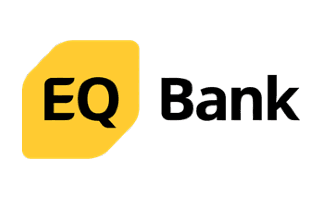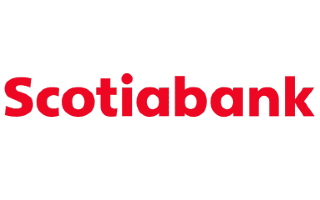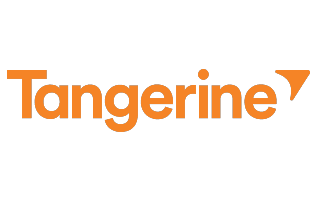
- Earn up to 2.75% interest for 12 months
- Unlimited free transactions
- $0 account fee
- Zero everyday banking fees
- No min. balance required
- CDIC protection for balances up to $100,000
Saving rainy-day funds for emergencies like car and home repairs or healthcare can help you stay out of debt and have peace of mind. An emergency fund helps create a safety net you can fall back on when the unexpected happens.
Read our guide below to learn where to keep your money in the best savings accounts for emergency funds in Canada, tips to help your savings grow and how you can be ready for life’s next unexpected—and costly—events.
An emergency fund is a financial safety net you can rely on if a major unexpected event happens in your life. When not being used, it can also help you earn interest and reach your financial goals. Unlike rainy-day funds that are meant for smaller, one-off expenses, an emergency fund is there to help in significant times of crisis. People commonly use emergency funds for:
Emergency funds should be used for major emergencies and not for expenses you forgot to plan for, like birthday gifts, property taxes. If you can answer “yes” to these two questions, it’s most likely an emergency.



EQ Bank Personal Account
Interest Rate
Account Fee
Transaction Fee
Ongoing Interest Rate
1%
Promotional Interest Rate
Up to 2.75%
Monthly Account Fee
$0
Minimum Balance
$0
CDIC Deposit Insurance
$100,000
Tangerine Savings Account
Interest Rate
Account Fee
Transaction Fee
Ongoing Interest Rate
0.3%
Promotional Interest Rate
Up to 4.5%
Monthly Account Fee
$0
Minimum Balance
$0
CDIC Deposit Insurance
$100,000
Simplii High Interest Savings Account
Interest Rate
Account Fee
Transaction Fee
Ongoing Interest Rate
0.3%
Promotional Interest Rate
Up to 4.5%
Monthly Account Fee
$0
Minimum Balance
$0
CDIC Deposit Insurance
$100,000
EQ Bank Notice Savings Account
Interest Rate
Account Fee
Transaction Fee
Ongoing Interest Rate
2.5%
Promotional Interest Rate
No promotional rate available
Monthly Account Fee
$0
Minimum Balance
$0
CDIC Deposit Insurance
$100,000
Scotiabank MomentumPLUS Savings Account
Interest Rate
Account Fee
Transaction Fee
Ongoing Interest Rate
0.4%
Promotional Interest Rate
Up to 4.75%
Monthly Account Fee
$0
Minimum Balance
$0
CDIC Deposit Insurance
$100,000
Neo Savings Account
Interest Rate
Account Fee
Transaction Fee
Ongoing Interest Rate
3%
Promotional Interest Rate
No promotional rate available
Monthly Account Fee
$0
Minimum Balance
$0
CDIC Deposit Insurance
$100,000
KOHO Essential Plan
Interest Rate
Account Fee
Transaction Fee
Ongoing Interest Rate
2%
Promotional Interest Rate
No promotional rate available
Monthly Account Fee
$4
Minimum Balance
$0
CDIC Deposit Insurance
$100,000
PC Money Account
Interest Rate
Account Fee
Transaction Fee
Ongoing Interest Rate
2.2%
Promotional Interest Rate
Up to 2.9%
Monthly Account Fee
$0
Minimum Balance
$0
CDIC Deposit Insurance
$100,000
Here’s a step-by-step guide on how to start an emergency fund, or rainy-day fund.
You won’t know how much you’ll need to save for your emergency fund until you know how much you spend each month. That starts with creating a budget and tracking your bills, expenses and spending.
If you’re just starting your emergency fund, set a smaller goal of $500 or $1,000. Once you get there, you can set a higher goal of three to six months’ worth of expenses, depending on your needs. Determine how much to set aside each month to reach this goal.
Creating a separate account to store your emergency fund means it’s separate from your daily spending account so you can afford temptation but is still easily accessible.
Start out with a high-yield savings account from a digital or online bank first, then decide if you’d like to move some of your savings into stocks once you’ve saved a nice buffer.
Just note that you won’t want to move all your funds into stocks, as you may pay a penalty when you try to access your money for emergencies. Keep all or most of your emergency fund in an accessible place.
Set up your bank accounts so that part of your paycheque or day-to-day purchases automatically gets transferred to your emergency fund.
For example, Scotiabank’s Bank The Rest savings program lets you round up your debit card purchases to the next multiple of $1 or $5 and automatically deposits the difference into your bank account.
Other banks may let you transfer a percentage of your paycheque straight to savings. If money is tight, start with a small amount like 5%, then work your way up. No amount is too small to start saving.
Boost your emergency fund by saving any extra money you receive throughout the year, such as birthday or holiday money, work bonuses, tax refunds, credit or debit card rewards and so on.
A general rule of thumb is to save between three to six months’ worth of expenses, while some experts suggest saving for up to 1 year. However, how much you can contribute depends on your income, expenses and financial goals, among other factors.
You can start a small emergency fund with as little as a few hundred dollars, which may come in handy for things like unexpected car repairs, pet emergencies or other essentials.
There’s no one-size-fits-all when it comes to calculating your emergency fund. Here are three possible methods to determine how much you need to tuck away for a rainy day.
Here’s how much you might put away using the monthly method after breaking down your expenses for the month:
| Category | Expenses |
|---|---|
| Rent | $1,000 |
| Groceries | $450 |
| Dining out | $350 |
| Car loan | $200 |
| Utilities | $150 |
| Miscellaneous expenses | $150 |
| Car insurance | $100 |
| Cell phone bill | $75 |
| Car fuel | $50 |
| Subscriptions | $30 |
| Total expenses | $2,555 |
If your goal is to have three months’ worth of expenses stored away, you’d need $7,620 ($2,540 x 3) in your emergency fund. For a more conservative savings plan of six months, you’d need $15,240 ($2,540 x 6).
If money is tight, it might be hard to find some extra cash to support your emergency fund. Instead, focus on what you can save, rather than what you should save.
Here are four tips to try to expedite your savings goals:
Having an emergency fund comes with a host of benefits, but there are also a few caveats to keep in mind.
Consider our list of the best banks in Canada and these factors when you’re comparing the best savings accounts for an emergency fund:
Savings accounts are the most common place to park an emergency fund, but there are alternatives. If you’re looking for a nontraditional place to store your money or want to build an additional reserve beyond a standard emergency fund, consider these other options:
GICs are an effective way to save for retirement but they can also be used as an emergency fund or safety net if you sign-up for a cashable GIC. Cashable GICs offer a guaranteed return on your principal plus fixed interest with the flexibility to redeem your money early (typically after a short minimum holding period) without penalty.
Life insurance is a financial product that’s good to have, but never fun to think about. A cash value policy can protect your family if you die, but you can borrow from the policy if you need access to cash. You’re not required to pay back these loans, but they affect the balance your beneficiaries receive when you die.
Tax-free savings accounts allow you to deposit up to $7,000 per year without paying capital gains taxes on anything you’ve earned, and far more if you haven’t yet opened a TFSA. This contribution room changes and accumulates every year just like a Registered Retirement Savings Plan (RRSP), meaning that any unused room is carried over to subsequent years.
Finding a savings account that offers a high interest rate and low or no fees can help you grow your emergency fund quicker. Consider any of the best savings account for an emergency fund that we’ve already talked about or compare your options to find another account that suits your needs.
From a 4% to a 5% interest savings account, here’s how to find the best savings rates in Canada.
Compare current savings account interest rates so you can grow your savings.
Earn a high interest rate on your savings with no minimum deposit requirements and no monthly fees with the Neo Money Account.
Your guide to how TFSAs and RRSPs work, and how to choose the right account for your savings goals.
Discover how to budget for a new home, save effectively and plan for ongoing expenses.
Maximize your savings with a TFSA, enjoying tax-free growth, flexible withdrawals and diverse investment options.
Start saving for your retirement at any age by learning about registered retirement savings plans.
Compare the best high-interest savings accounts in Canada to build a bigger bank balance.
Find out about competitive interest rates, minimal fees and other perks you can enjoy when you bank at a nonprofit institution.